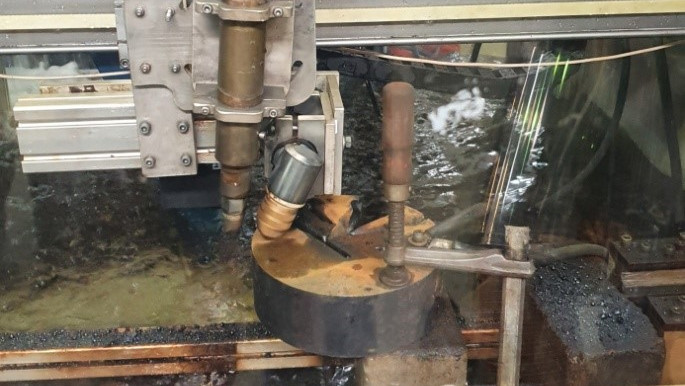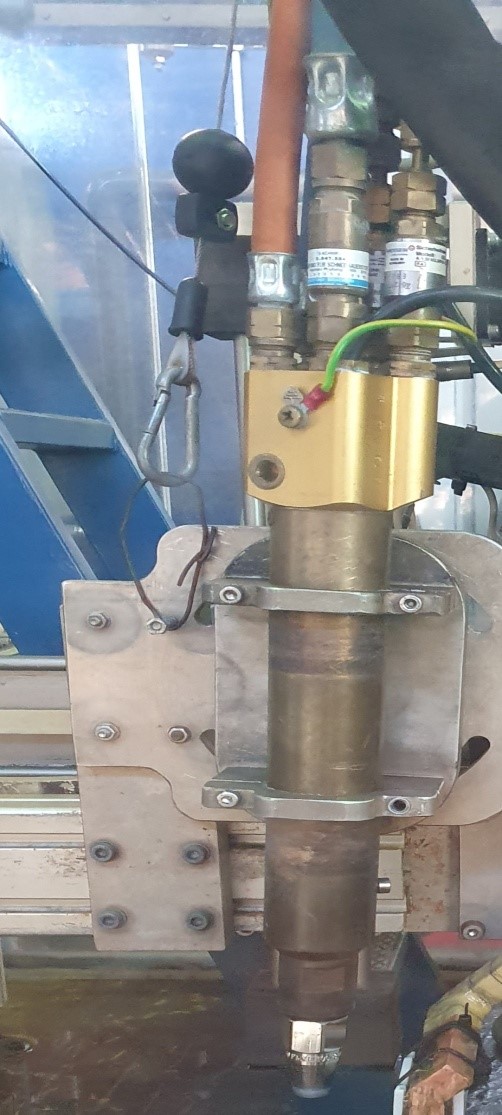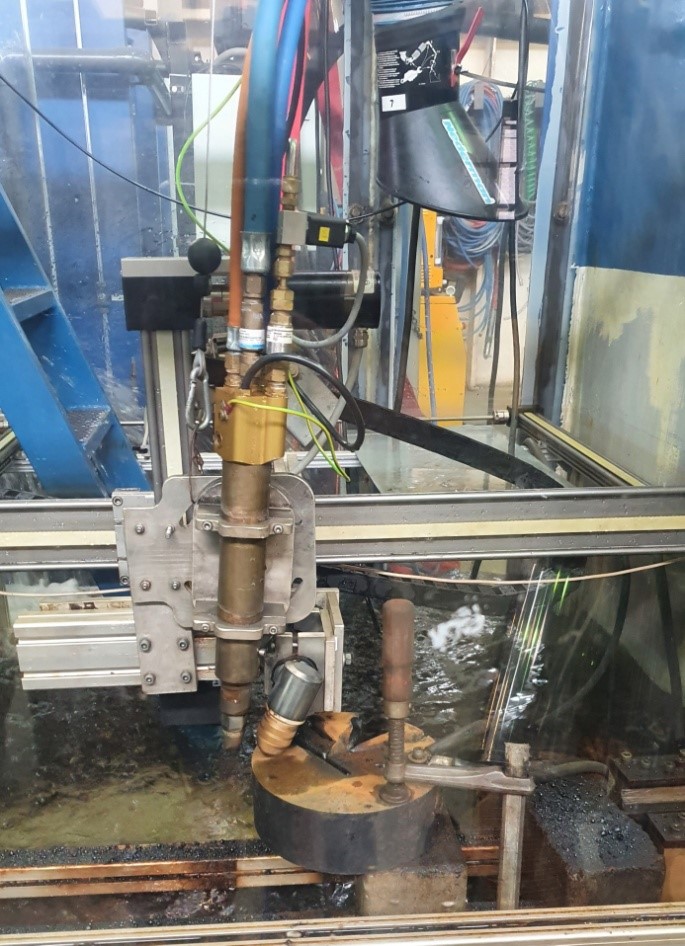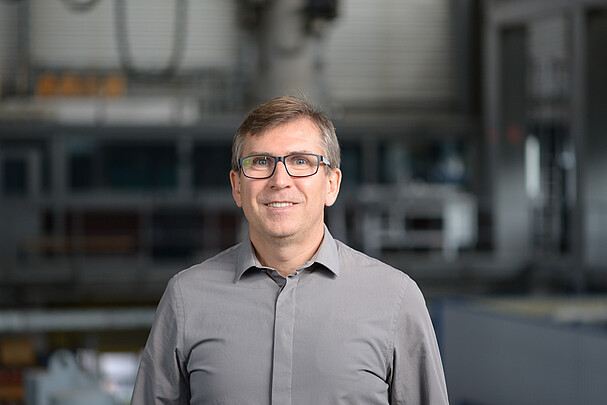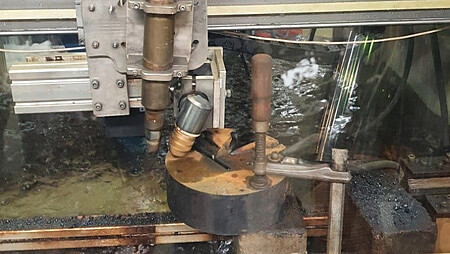
The autogenous flame cutting is a thermal separation process applied in the underwater area at UWTH. Channels are used to direct a mixture of oxygen and fuel gas as well as oxygen itself onto the workpiece to be cut. The oxygen-fuel gas mixture is ignited externally once through a spark plug, and the resulting heating flame is directed onto the workpiece surface until it reaches the ignition temperature of the material. Subsequently, the oxygen jet is directed onto the preheated workpiece surface, leading to the local combustion of the material with oxygen, creating a cut kerf.
The autogenous flame cutting is a thermal separation process applied in the underwater area at UWTH. Channels are used to direct a mixture of oxygen and fuel gas as well as oxygen itself onto the workpiece to be cut. The oxygen-fuel gas mixture is ignited externally once through a spark plug, and the resulting heating flame is directed onto the workpiece surface until it reaches the ignition temperature of the material. Subsequently, the oxygen jet is directed onto the preheated workpiece surface, leading to the local combustion of the material with oxygen, creating a cut kerf.
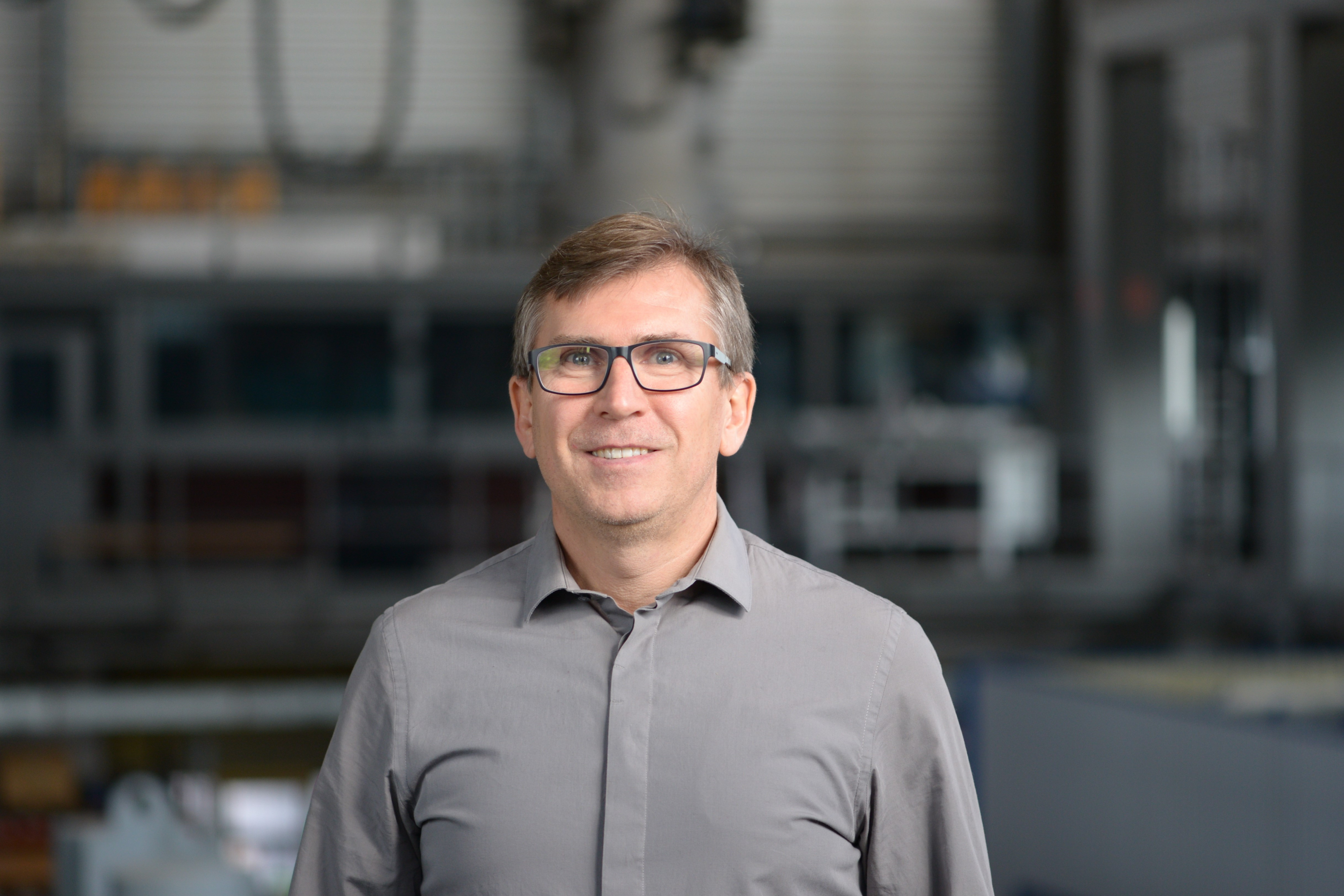
30823 Garbsen



